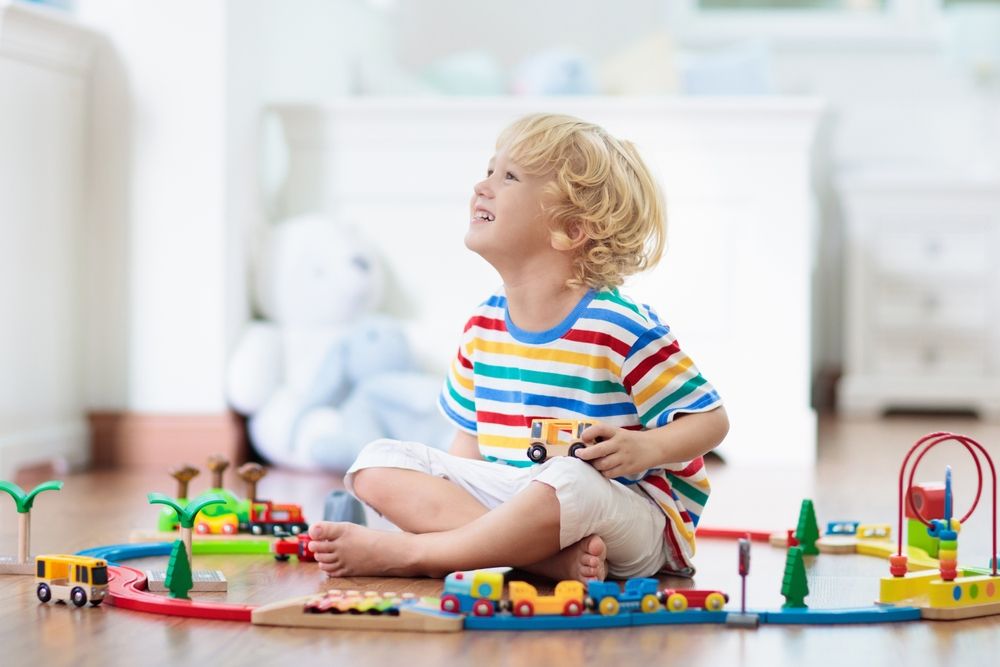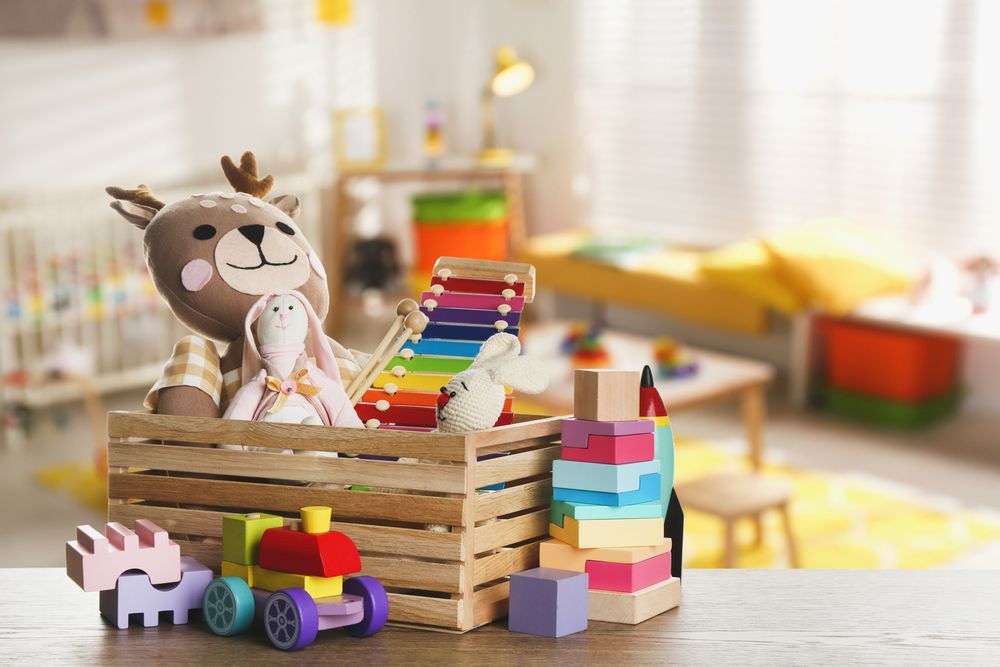Shopping for kids’ toys can be fun, but it can also quickly become an expensive endeavor. Kids grow fast and their interests change even faster, which means you might end up spending a lot of money on toys that are soon forgotten or outgrown. However, with a little planning and strategy, you can save money while still providing your children with toys that are both fun and educational. Here are some practical tips on how to save money when buying kids’ toys.
1. Buy Quality Over Quantity
It might be tempting to buy several cheaper toys that catch your child’s eye, but opting for a few higher-quality toys can actually save you money in the long run. High-quality toys tend to last longer, offer more value in terms of learning opportunities, and are less likely to be thrown out due to breakage or wear.
-
Tip: Invest in durable toys that can withstand frequent use and that offer educational or developmental value. Wooden toys, for example, are often more durable and have a timeless appeal compared to plastic toys.
-
Impact: Fewer, higher-quality toys will last longer, saving you money by reducing the need for constant replacements.
2. Shop During Sales and Clearance Events
Toys often go on sale during key times of the year, such as during holiday sales, back-to-school seasons, or after major holidays. Shopping during these sales can allow you to buy toys at significantly lower prices.
-
Tip: Keep an eye out for Black Friday, Cyber Monday, and other holiday sales. Many stores also have clearance events after Christmas, which is a great time to stock up on toys for the future.
-
Impact: Shopping during sales can save you anywhere from 20% to 50% off regular prices, allowing you to buy toys at a fraction of the cost.
3. Buy Secondhand or Gently Used Toys
Kids’ toys are often in excellent condition when sold secondhand, especially if they’ve been well cared for. Buying used toys from thrift stores, consignment shops, or online marketplaces like Facebook Marketplace and eBay can save you a significant amount of money.
-
Tip: Look for gently used toys, particularly for toys that your child may quickly outgrow. You can also buy secondhand toys that come with accessories or sets, which can be much cheaper than buying new.
-
Impact: Purchasing secondhand toys can cut your spending in half, providing the same toys at a much lower cost and reducing waste.
4. Consider Open-Ended Toys
Open-ended toys—such as building blocks, dolls, art supplies, or puzzles—allow children to use their imagination and creativity. These toys can be enjoyed at different stages of development and provide hours of playtime, offering much better value than toys designed for a specific age or interest.
-
Tip: Choose toys that can be used in multiple ways, like LEGO sets, wooden building blocks, or play dough. These types of toys engage children in a variety of activities, reducing the need to buy new toys frequently.
-
Impact: Open-ended toys are versatile, meaning your child will continue to enjoy them for a longer period of time, making them a cost-effective option in the long run.
5. Use Coupons and Discount Codes
Many stores offer discounts, promo codes, or coupons for toys, especially if you’re shopping online. A quick search for a store’s current coupon code or subscribing to a retailer’s newsletter can often give you access to deals or exclusive savings.
-
Tip: Look for online coupon websites like RetailMeNot, Honey, or Coupons.com before making a purchase. Signing up for your favorite toy store’s loyalty program may also give you access to exclusive discounts.
-
Impact: Coupons and promo codes can save you a significant amount on toys, especially when combined with sales or discounts, making the overall cost of the toy much more affordable.

6. Buy Toys That Can Be Shared Among Siblings
If you have multiple children, consider buying toys that can be shared. Larger items like building sets, art supplies, or outdoor toys such as trampolines or bikes are often used by all siblings, helping you save money by purchasing fewer toys.
-
Tip: Invest in toys that encourage group play, such as board games or sports equipment, which can be used by all children in the family.
-
Impact: Buying toys that can be shared among siblings reduces the need for multiple toys and ensures that everyone gets to enjoy them.
7. Check for Free or Low-Cost Toy Swap Groups
Toy swaps are a great way to refresh your child’s toy collection without spending any money. Many communities or online groups host toy swaps, where parents can exchange toys their children have outgrown for new (to them) ones.
-
Tip: Search for local Facebook groups or community websites where parents exchange or swap toys. Toy swap events or playgroups are also a great way to find gently used toys at no cost.
-
Impact: Participating in toy swaps allows you to refresh your child’s toy collection without spending money and reduces the environmental impact by reusing toys.
8. Look for Multi-Use or Convertible Toys
Some toys are designed to grow with your child or serve multiple purposes, making them a smart investment. For example, a toy that transitions into a piece of furniture or a convertible toy car can be used in various ways and for different age groups.
-
Tip: Invest in convertible toys that your child can use for several years, such as multi-stage car seats, cribs that turn into beds, or activity centers that grow with your child.
-
Impact: Multi-use toys save money by offering long-term value, reducing the need to buy new toys as your child’s needs change.
9. Create a Toy Wishlist for Birthdays and Holidays
Rather than purchasing toys throughout the year, consider creating a wishlist for your child’s birthday and holiday seasons. By making fewer, more intentional purchases, you can avoid impulse buys and get the most value for your money.
-
Tip: Work with your child to create a wishlist of toys they really want. Focus on quality, educational toys that will be used frequently.
-
Impact: Planning toy purchases for specific events helps you avoid unnecessary impulse buys and ensures that your child receives meaningful gifts that will last.
10. Consider DIY and Craft Projects
Homemade toys or craft projects can be a fun and budget-friendly alternative to store-bought toys. Simple DIY projects like creating your own play dough, building forts with household items, or making paper dolls can provide hours of entertainment at little to no cost.
-
Tip: Search for DIY toy ideas on Pinterest or YouTube for inspiration. Crafts such as making puzzles from cardboard, designing a homemade dollhouse, or creating hand-painted toys are inexpensive options.
-
Impact: DIY projects encourage creativity, save money, and often offer more personalized, meaningful toys for your child to enjoy.
Saving money when buying kids’ toys doesn’t mean sacrificing fun or educational value. By shopping smart, considering secondhand options, investing in quality over quantity, and embracing shared toys or DIY projects, you can provide your child with the toys they love without breaking the bank. The key is to be intentional about your purchases and look for ways to maximize value while minimizing cost. Not only will you save money, but you’ll also contribute to a more sustainable and thoughtful way of parenting.





